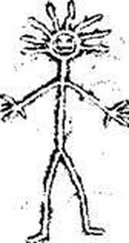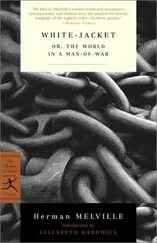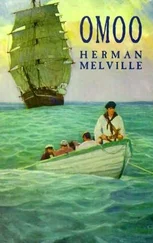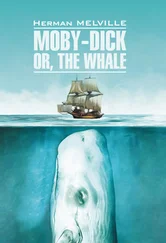If the clay walls, threatening to slide, crumble, or even collapse in extended avalanches, demanded constant attention (tiling, retiling, buttressing, propping), the pitched roofs required, perhaps, even more work. They were mostly made out of pine branches that he had learned to entwine while they were green and supple, interlacing them with leather where needed. The result was a tight enough thatch to keep the floors in the passageways more or less dry—but seldom sufficiently waterproof. In whichever trench or cell Håkan took residence, he reinforced the roof with some waxed tarpaulins and oilcloths. He also made rectangular frames out of sticks tied together with tripe, which he then fitted with skins, creating movable panels, some of which could be opened and shut with leather hinges. In varying combinations, branches, cloth, and leather panels were mounted on beams buried obliquely on either side of the trench and joined, at the cusp, to a ridgepole with rope made of braided leather straps. His glue, perfected over the years, sealed the cracks between the disparate parts. These were rather precarious structures, and some of the rare events that interrupted the sameness of his existence over the years resulted from problems with the roofing. Sometimes, under the weight of rain or snow, or merely because the wood had decayed, a section of the roof came crashing down. Once, the whole construction, beams, joists, and all, collapsed on him while he was sleeping. A big bough stabbed him in the leg. Through the yellow fat, he could see his femur. At first, it did not heal properly. He feared for his leg and considered different devices to amputate it himself. Then, he feared for his life. Despite the fever and the stupefying pain, he managed to drain the wound, keep it clean, suture it, bind it, and, eventually, cure himself. Since then, all his beds were covered by a sturdy canopy.
A few years later, however, there was another incident, from which no canopy could have saved him. The roof of one of the lateral passageways was hit by lightning. To prevent the fire from spreading, he tore down all connecting sections. Isolated, the straight line of fire kept burning after the short storm had blown over, and, for a moment, as dusk set in and the flames died down, it looked as if there were two horizons, each glowing with its own twilight.
Less grand but more profound was another phenomenon, involving a different part of the ceiling, that lasted for some time. He was working on a distant tunnel, making a deep cellar for his tanned skins, which demanded watertight roofing. After securing a few pieces of leather and tarpaulin to the protruding structure, he climbed down into the hole to inspect the results. To his complete bewilderment, on one of the walls he saw an image of the sun setting among the treetops—upside down. A perfect picture of the world outside of the hole. In lifelike colors. And it moved. The trees swayed; birds flew by; the sun continued its descending course. Upward. It felt like someone else’s hallucination; as if someone, far away, were dreaming up that place (wrong side up), and Håkan, for some reason, were able to look into that dream. Overcoming his bewilderment, he dislodged one of the leather panels to see if there was something abnormal outside. As light streamed in, the image on the wall vanished. He looked out of the hole. The same ashen landscape as always. Nothing out of the ordinary. He ducked back in and fitted the panel back into place. The hole darkened, and the image reappeared. As he leaned across it, his own shadow revealed that there was a hole in the tarp through which a beam of light came filtering in and, it seemed, became that inverted moving picture as it hit the wall. There was no room in his mind for superstition or magic. Astounding as this image was, he knew it must be a natural occurrence. But he failed to understand what was behind this prodigy. For a few days, the picture appeared on the wall as the sun started to set and vanished before it had fully sunken. Even if he knew every last detail of that patch of land, Håkan never tired of looking at its slightly watery inversion on the wall. Then, one evening, it was gone. He tried everything, but never managed to bring the picture back.
These events provided him with a vague calendar—before and after the accident or the lightning or the moving picture. And there were a few more incidents that loosely divided his monotonous life into different eras. The bear that kept him distant company for one fall. A shower of stars. The fox that gave birth in one of his tunnels. Those times the moon turned red. The birds whose feet froze into the ground. Some bad storms. In time, however, the order of these events got confused in his head. Looking back, his life in the maze seemed a completely uniform period. The few extraordinary moments were lumped together in a cluster of their own, unrelated to the sameness that ruled those years. Seasons went by and returned, and Håkan’s occupations never changed. A roof could leak less. Traps had to be set. A gutter overflowed. Tiles had slid out of place. An abandoned ditch had to be filled. The coat had to be mended. A trench had fallen into disrepair. Firewood had to be gathered. An extension to an old passageway was necessary. Drinking water was needed. A new tool had to be made. Some meat had to be jerked before it spoiled. Cobblestones had come loose. A leather flue was too decayed. More glue had to be boiled down. Before one of these tasks had been completed, the next one demanded his attention, so that at all times he was engaged in one of these chores, which, together, over time, formed a circle or, rather, some sort of pattern that, though invisible to him, repeated itself, he was sure, at regular intervals. These recurrent duties made every day resemble the last, and within each day, from sunup to sundown, there were few markers to divide time. He did not even eat at regular hours. In fact, his diet had been reduced to the absolute, life-sustaining minimum. Sometimes he was surprised that his health was so robust. He had not lost a single tooth—and he had never met an adult with a full set of teeth. This could only be explained by another fact that he found equally puzzling: even though he did not know how old he was, it was clear to him that he had reached the age at which the human body has matured and starts its decline. Still, he had never stopped growing. Since he had not seen another human being in years, he had no sense of how tall he would feel next to someone else, but he did know he would be conspicuous—an added reason for staying out of sight. But these were only fleeting thoughts. He seldom considered his body or his circumstances—or anything else, for that matter. The business of being took up all of his time.
Those flailing arms sticking out of the upright trunk. Those legs, like ridiculous scissors. Those forward-facing eyes on that flat face with that beakless, snoutless hole for a mouth. And the gestures. Hands, brow, nose, lips. So many gestures. Those misshapen and misplaced features and their wasteful, obscene movements. He thought nothing could be more grotesque than those forms. His next thought was that he looked just like them. Then, he ran for his gun.
Because he had lost the ability to think about the future, he had stopped considering what to do if someone ever came to the burrow. And now that five men were approaching, it seemed the most obvious thing in the world. Of course someone would come at some point. With the oncoming men, a forgotten dimension of reality suddenly reappeared, defying his senses. The world was new, complex, and frightening. His hands shook as he readied the gun.
He reached toward the ceiling, slid a leather panel to the side, and peered out. The men rode about leisurely, inspecting the burrow and pointing out this and that detail. They were alert and, at the same time, relaxed, as if they knew that he lived there, but also that he was outnumbered. Had they been spying on him? Where from? How could he have failed to notice? Everything in their approach—their loud voices, their occasional laughs, their slow pace and the sagging reins, the casual way in which they held their rifles—indicated that they were certain he was alone. They had the arrogance of the conqueror who knows that merely showing up will be enough.
Читать дальше












